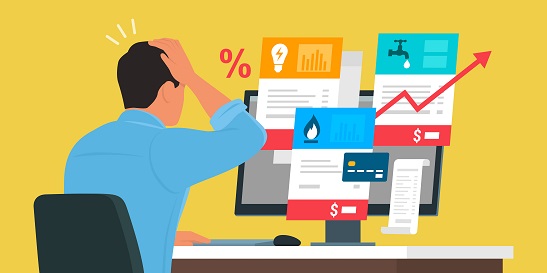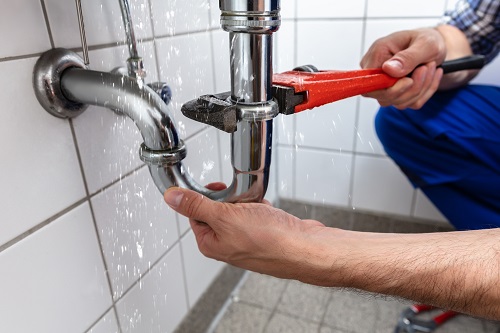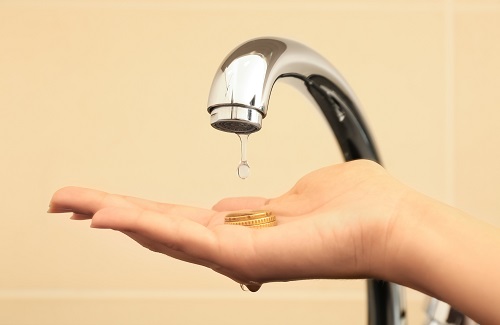Many heads of the family try their best to make ends meet every month because times are hard these days. Money can be challenging to come by, and with so many things you need to pay for, there will be times when there won’t be enough left. You need to find ingenious ways to fulfill your monthly obligations, even if it means nitpicking on many things, like saving on utility bills such as electricity and water.
Water bills can be a significant expense for many households, but there are several ways to reduce your water usage and save money on your water bill. From fixing leaks to using low-flow fixtures, you can take various steps to lower your water bill and keep more money in your pocket.

This post will explore five ways to save money on your water bill, including tips for reducing water usage and identifying sources of waste. After reading this post, you’ll be informed of the indicators of leaking pipes to prevent wasting water. So, if you’re looking to cut costs and keep more money in your pocket, read on to learn how to do it.
Fix Leaks
Leaks can waste significant water, contributing to a high water bill. You can perform a simple test to find leaks by turning off all faucets and appliances that use water and then checking your water meter. If the meter is still moving, there’s likely a leak.
Indicators of water leaks from pipes are moldy, discolored patches and cracks on your walls, a decrease in water pressure, and a stained or sagging ceiling. For small leaks, such as a dripping faucet, you can fix the problem yourself by replacing washers or O-rings. However, for more extensive leaks, it may be necessary to hire a plumber.
Use Low-Flow Fixtures
Low-flow fixtures, such as showerheads and toilets, use less water than traditional ones. It can result in significant water savings over time. Low-flow showerheads, for example, use less water per minute than conventional showerheads, typically 1.8 gallons per minute (GPM) or less, compared to the standard of 2.5-5 GPM. It means you can save up to 50% of the water you usually use for a shower.
Similarly, low-flow toilets use 1.28 gallons per flush (GPF) or less, compared to the older toilets that use up to 3.5- 7 GPF.
Upgrading to low-flow fixtures can be relatively simple and cost-effective. You can purchase low-flow fixtures at most home improvement stores and install them yourself or hire a plumber to do the installation for you.
Install A Water-Efficient Washing Machine
Washing machines can use a lot of water, depending on the model and the type of load. Upgrading to a water-efficient washing machine can help you save water and reduce your water bill.
There are several ways to determine if a washing machine is water-efficient. The most common way is to look for the Energy Star label, which indicates the machine meets specific energy and water efficiency standards set by the U.S. Environmental Protection Agency (EPA).
Another way to determine if a washing machine is water-efficient is to look for the modified energy factor (MEF) and the water factor (WF) ratings. The MEF rating indicates the machine’s energy efficiency, while the WF rating indicates water efficiency. The higher the rating, the more efficient the appliance.
Some high-efficiency washing machines use as little as 14 gallons of water per load, compared to the traditional washing machine, which can use up to 40 gallons per load.
Installing a water-efficient washing machine can be more expensive than a traditional one, but the savings on your water bill over time can compensate for the initial cost.
Collect And Reuse Rainwater
Rainwater can be collected and reused for watering plants, flushing toilets, and other non-potable uses. Using rainwater for these purposes can reduce your reliance on treated water and save money on your water bill. You can install a rainwater collection system, which typically includes a collection barrel or cistern, a gutter system, and a pump to distribute the water. Collecting and reusing rainwater not only helps you save money on your water bill, but it’s also an environmentally friendly way to conserve water resources.
Be Mindful Of Your Water Usage
Being mindful means being aware of how much water you’re using and taking steps to reduce your consumption. One way to be mindful is to practice water-saving habits, such as turning off the faucet while brushing your teeth, fixing leaks promptly, and using a broom instead of a hose to clean driveways and sidewalks.

Shocked worried man checking expensive bills online on his computer, save money on monthly bills concept
You can also be mindful of the appliances and fixtures you use. For example, you can use a dishwasher only when it is full or avoid running less than a full load on the washing machine.
Conclusion
Saving money on your water bill is possible by implementing simple changes to your daily habits and reducing water usage. There are many ways to lower your water bill and save more money, from fixing leaks to using low-flow fixtures.
Remember that being mindful of your water usage, monitoring your water bill, and identifying sources of waste are vital to reducing your water usage and ultimately saving. By following these tips, you can achieve your goal of saving water and, at the same time, positively impact the environment.










